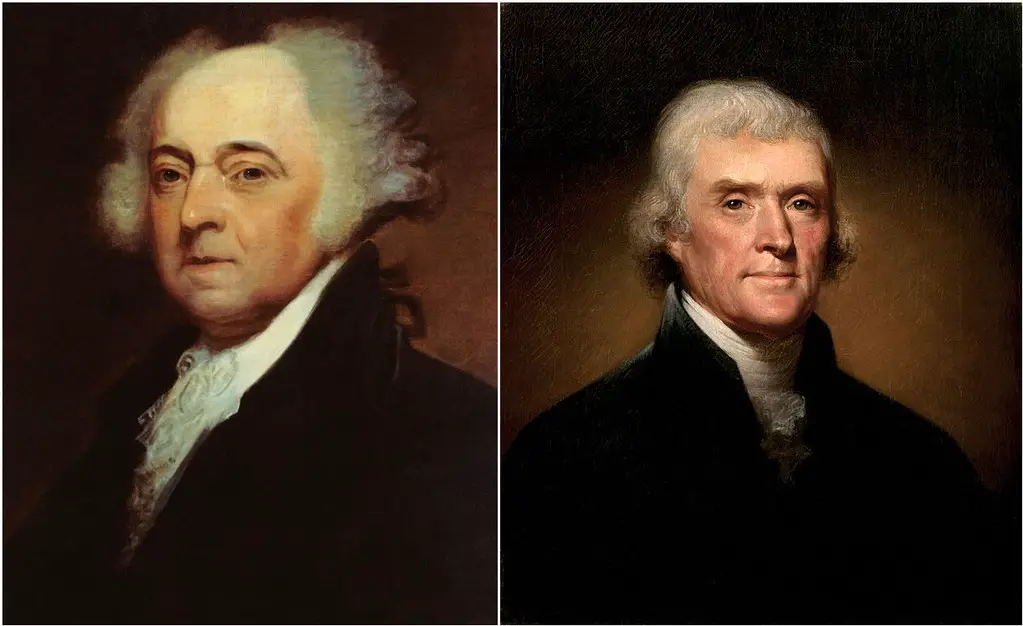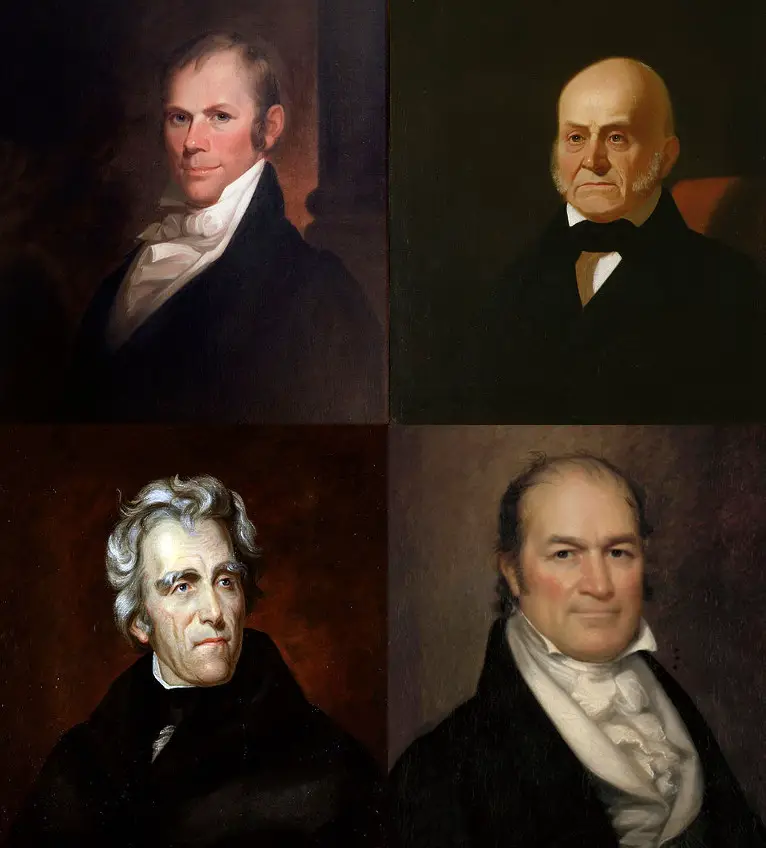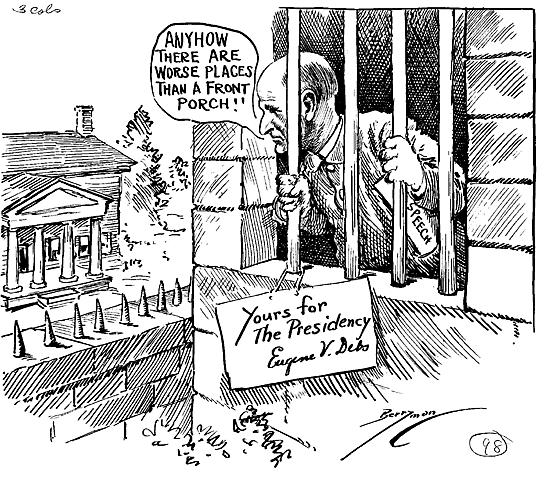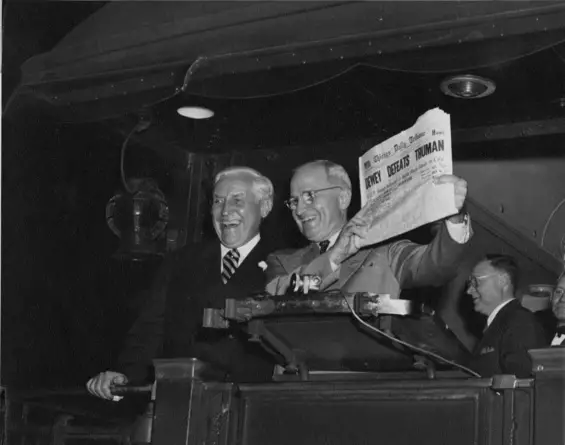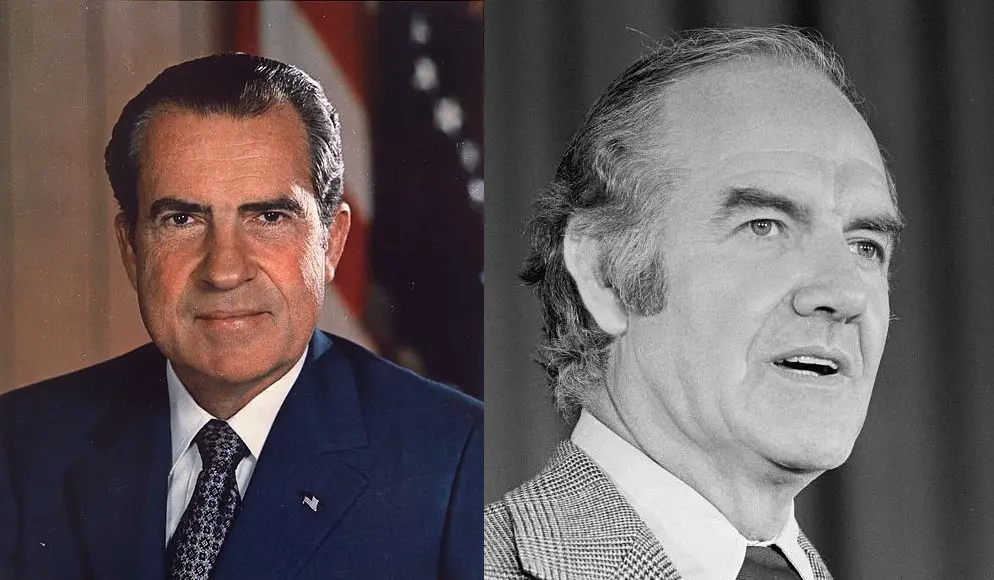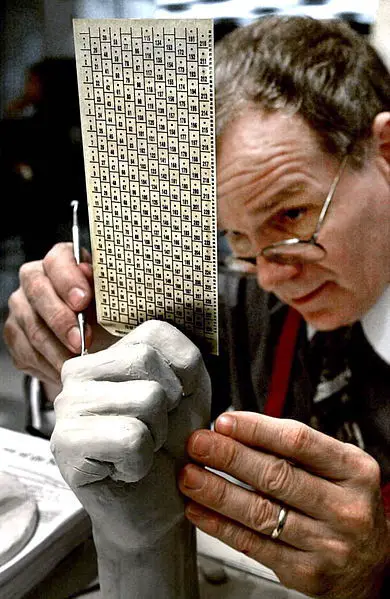When the run for the presidency begins to heat up, things can get a little strange. While the previous and the current U.S. presidential elections have proved to rank high on the strange scale regardless of who you supported, just be happy to know there have been other strange presidential elections throughout the history of the United States.
The First Election in 1788
We need to start from the beginning since, in the grand scheme of things, the first election for president could be considered strange. There was no competition for George Washington for president, and he ran completely unopposed. He received 100% of the Electoral College votes, the only time in history this has been done.
Unlike the way it is done today, in 1788, no vice-presidential pick was made by Washington. During this period, the office of vice-president was given to whoever had received the next most electoral votes. While Washington got 100% of the votes, the electors actually registered two votes to make sure there was someone that could fill the vice-presidential spot. Out of eleven candidates vying for the new position, John Adams was the man who received the most votes and became the vice-president. Source
Election of 1800
It didn’t take long after the first presidential election for another strange one to make it on the list. The election of 1800 between Thomas Jefferson and John Adams became the first where political parties battled. Adams was aligned with the Federalist Party, and Jefferson ran with the Democratic-Republican party (yes, they once played nicely together). The Electoral College still had the process in place of picking the president and vice-president by who got the most electoral votes, and this created some problems.
When the election was over, Jefferson was in a tie with his own choice for vice-president, Aaron Burr. A plan had been in place where a delegate from South Carolina would throw his vote toward Jefferson to seal him the win as president, but at some point, the vote went to Burr. Each candidate came up with 73 electoral votes. This sent the vote to the House of Representatives.
Unfortunately, members of the House were less than thrilled at their choices. After seven days of voting, the House finally gave Jefferson more votes to become president while Burr became vice-president. This election led to the 12th amendment to the U.S. Constitution, which stipulated that presidents and vice-presidents would be voted on separately. Incidentally, the election of 1800 was the first election where an incumbent leader was defeated in an election. Source
Election of 1824
The election of 1824 started out rather strange. All four candidates came from a single party, the Democratic-Republicans, since the Federalist Party was drying up. It was the first time a candidate from the Federalist Party hadn’t run. Andrew Jackson took the popular vote and the Electoral College vote in the election. He was followed by John Quincy Adams, who was the Secretary of State, Treasury Secretary William Crawford, and House Speaker Henry Clay.
None of the candidates could secure a majority of the votes, which sent the decision to the House of Representatives. The House was only able to pick from two of the candidates, so the ones with the fewest votes got eliminated, which included House Speaker Clay and Secretary Crawford. This was where things got dicey.
Even though Jackson had won both the popular and Electoral College votes, an intriguing turn of events took place during the decision-making in the House. Supporters of Clay threw their support toward Adams, and some states who had initially voted for Jackson also changed their vote to Adams. Clay disliked Jackson and had been instrumental in forming a coalition against him. The result was the election of John Quincy Adams to the presidency.
After Adams was inaugurated, he chose William Clay as his Secretary of State. Jackson was, of course, furious. He called it a “corrupt bargain,” gave up his Senate seat, and said he would be back to win the election in 1828. Source
Election of 1828
The tone for the 1828 election had already been set after the election of 1824, and it would become one of the dirtiest in U.S. history. Jackson and his supporters began their assault by accusing Adams of misusing public funds. The accusations against Jackson were much harsher, however. His military career was questioned, specifically charges about court-martials and executions of soldiers. One item that was distributed was the “coffin handbill,” which was a poster depicting six black coffins that claimed they were of the militiamen Jackson had executed.
Questions and accusations also arose about Jackson’s marriage to his wife, Rachel. Because of the timing of their marriage, there was a question if she had been divorced before she began living with Jackson forty years before. Jackson was being accused of adultery.
But Adams had some hefty accusations thrown his way too. He was accused of pimping out an American girl to a Russian czar, and he was labeled an aristocrat. This was not a good label to have at the time.
Despite the accusations and dirty tactics on both sides, Jackson was extremely popular and won the majority of the electoral votes. Unfortunately, his wife did not get to see him take office. She died from a heart attack before the inauguration. Jackson blamed his opponents and believed they were the cause of her death. He refused to see Adams before the inauguration, as was customary with an outgoing president, and Adams, in turn, didn’t attend the inauguration of Jackson. Source
Election of 1872
The election of 1872 saw a first happen in a presidential election. One of the candidates died before the Electoral College cast their votes. Ulysses S. Grant went up against Horace Greeley for the office of president in 1872. There had been a split among the Republican Party, and Greeley ran representing a third party called the Liberal Republicans. The split caused the Democratic Party to not even nominate a candidate of their own.
After the popular vote was counted on November 29, 1872, Horace Greeley died before the Electoral College voted. He received 44% of the popular vote, but his death made Grant the sole major candidate. The remaining electoral votes were then split among the four other candidates. Grant later attended Greeley’s funeral in an act of reconciliation after their contentious run for the presidency. Source
Election of 1920
The 1920 election wasn’t that terribly exciting, but there was a third-party candidate who made things interesting from a rather unusual place. Warren G. Harding, the Republican, ran against James M. Cox, a Democrat, but there was a third-party candidate representing the Socialist Party named Eugene V. Debs.
While the other two candidates were free to campaign where they would like, Debs had to campaign from his jail cell. He had been imprisoned for his opposition to World War I and his views on the draft. It was Debs’s fifth time to run for the presidency, and he did it from the Atlanta Federal Penitentiary. More amazingly, he managed to get over 900,000 votes or about 3.4% of the popular vote. Harding won by a landslide over Cox and Debs and later commuted Debs’s prison sentence to time served. Source
Election of 1948
The election for the presidency in 1948 was in the bag for New York Governor Thomas Dewey — or so it seemed. All the signs pointed to his victory, but that wasn’t going to be the case even though it was believed to be a sure thing. Opinion polls were dismal for President Truman as only one in three approved of his job as president. The final poll before the election even had Dewey over Truman by five percentage points.
A Dewey win seemed certain since Republicans had taken control of the Senate and the House of Representatives in the mid-term elections, and Southern Democrats had abandoned Truman because of his view on civil rights. They had either walked out of the Democratic convention or didn’t support his nomination.
The expectations for a Dewey win went up to election day. Truman even heard an NBC report at midnight that said he was ahead by over a million votes but that Dewey was still expected to win. He finally found out he was still ahead at four in the morning and managed to hold that lead to win the presidency. Two days later, Truman held up one of the most famous headlines in history from the Chicago Tribune that read, “Dewey defeats Truman.”
Truman’s unexpected win was attributed to the “whistle-stop” campaign he took to cities and towns across the United States. Despite his dismal poll numbers, he was able to connect with undecided voters as an outsider while painting the picture of a “do-nothing” Congress. Dewey had been much more cautious in his campaigning and had tried to just maintain his lead. Source
The Election of 1972
This particular election wasn’t strange on the result of the vote but what had happened before the major part of the campaigning took place. Senator George McGovern was running against Richard Nixon, and right after McGovern secured the Democratic nomination, he chose Senator Thomas Eagleton as his running mate.
The scrutiny over McGovern’s pick began almost instantly, and it was found that Eagleton had some skeletons in his closet. The senator had been hospitalized for depression three times and had electroshock therapy during two of those times.
McGovern tried to support his vice-presidential pick, but he knew Eagleton was going to be a problem. Eagleton resigned only eighteen days after he had been picked and was replaced by Sargent Shriver. Nixon easily won the election, winning 49 of the 50 states. Source
Election of 2000
Who could forget the election of 2000 between George W. Bush and Al Gore and the infamous “hanging chad?” As everyone probably is aware, it all came down to Florida.
During election night, the TV networks flip-flopped on who they predicted would take the state. At one point, the networks placed the state with Gore and then removed it when returns showed Bush in the lead. That put Florida back in the undecided column. The state went back and forth until around 2:15 A.M. when Bush was projected as the winner of Florida, breaking the 242–242 electoral vote tie. Gore had even made a call to Bush to concede but later retracted it after the vote became too narrow to call. By the time daylight came around, Bush was leading Gore by 1700 votes. The narrow margin triggered a recount by Florida law.
Problems arose almost instantly. Overseas absentee ballots were still coming in, and there had been complaints about the butterfly ballot, the punch card that became a source of contention. The first recount cut Bush’s lead to just 300 votes. To make matters worse, in Palm Beach County, 19,000 ballots were removed. Other states were also having problems with their returns, such as in New Mexico and Oregon, but their results wouldn’t have resulted in a difference in the election. Everything came down to Florida.
A week after the election on November 14th, Katherine Harris, the Florida Secretary of State, had a court order that said all election returns had to be in her office by 5 P.M. of that day. But the court said that returns after the deadline couldn’t be dismissed. With Bush holding a 300-vote lead, it came down to the overseas absentee ballots that had to be counted by November 17th, according to Florida law. This deadline was extended to November 20th by the courts. By the end of the counting, Bush had a state-wide, 930 vote lead.
This was when things really became confusing. On November 21st, the Florida Supreme Court ruled to accept returns that were still coming in, and the deadline was pushed back again until November 26th. The Bush side quickly appealed that decision to the U.S. Supreme Court on November 22nd. On November 26th, Harris, the Florida Secretary of State, certified the election. Even this wasn’t without drama. Harris rejected Palm Beach County’s partial recount numbers and used previous numbers the county had submitted. In the end, Bush was certified with the win by 537 votes, giving him Florida’s 25 electoral votes and the election.
But things still weren’t over. The Gore camp contested the certification as was allowed after a certification had been made. Different arguments were heard in various courts in the state of Florida that dealt with the recount, possible mishandling of votes, and the deadline for votes to be counted. On December 8th, the Florida Supreme Court ruled that a recount of all ballots in the state would be done, and unrecorded votes from two counties would be counted. This cut Bush’s lead to 154.
This didn’t last long, however, and the U.S. Supreme Court ordered a stop to all vote counting on December 9th until it heard arguments on the Florida Court’s decision on December 11th. In the end, and after intense legal battles from both sides, it was ultimately going to be up to the U.S. Supreme Court to decide. They made their decision on December 12th and ruled against the lower court’s decision about manual recounts. Gore conceded the election the next night. The whole thing was finally over. The election of 2000 became one of the most confusing, debated, and drawn-out elections in history. Source, Source
So, don’t be surprised when the next presidential election cycle and those to follow are rather strange. It hasn’t been the first time, and it won’t be the last.



